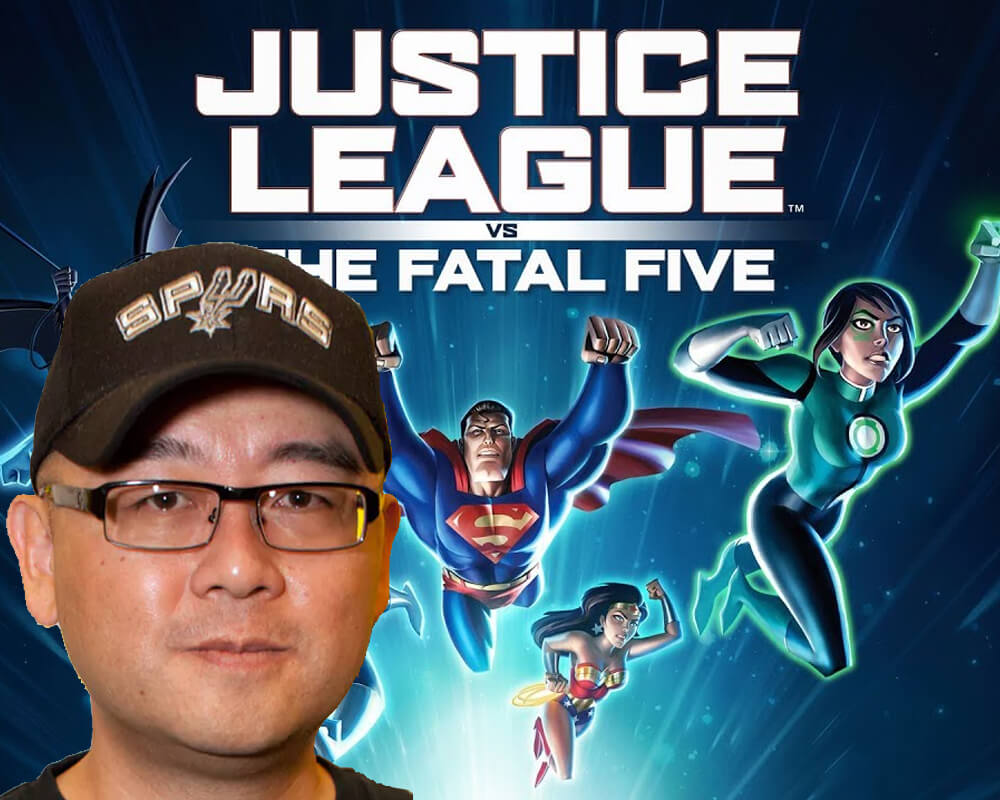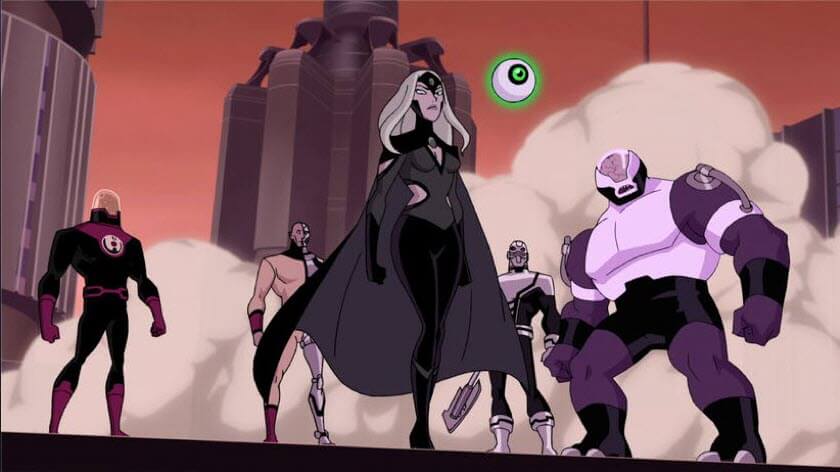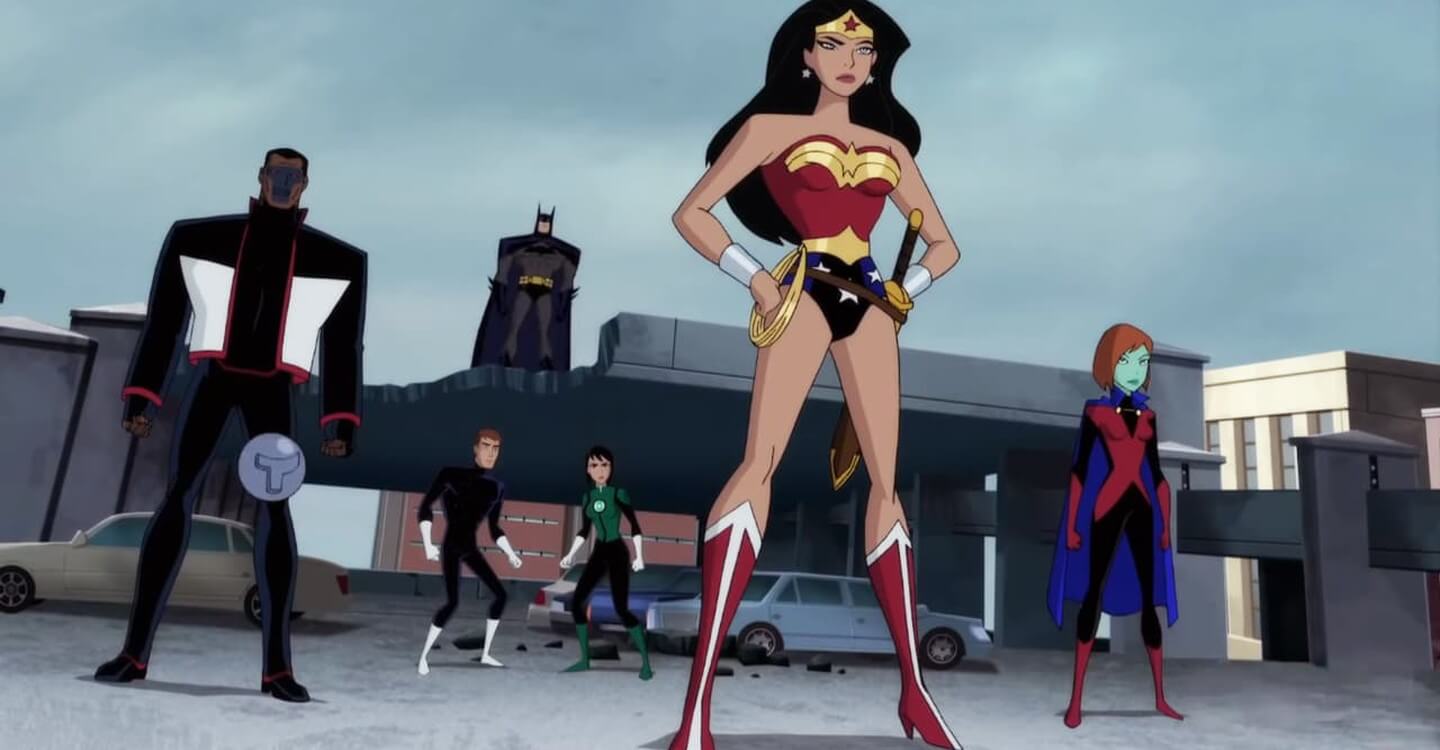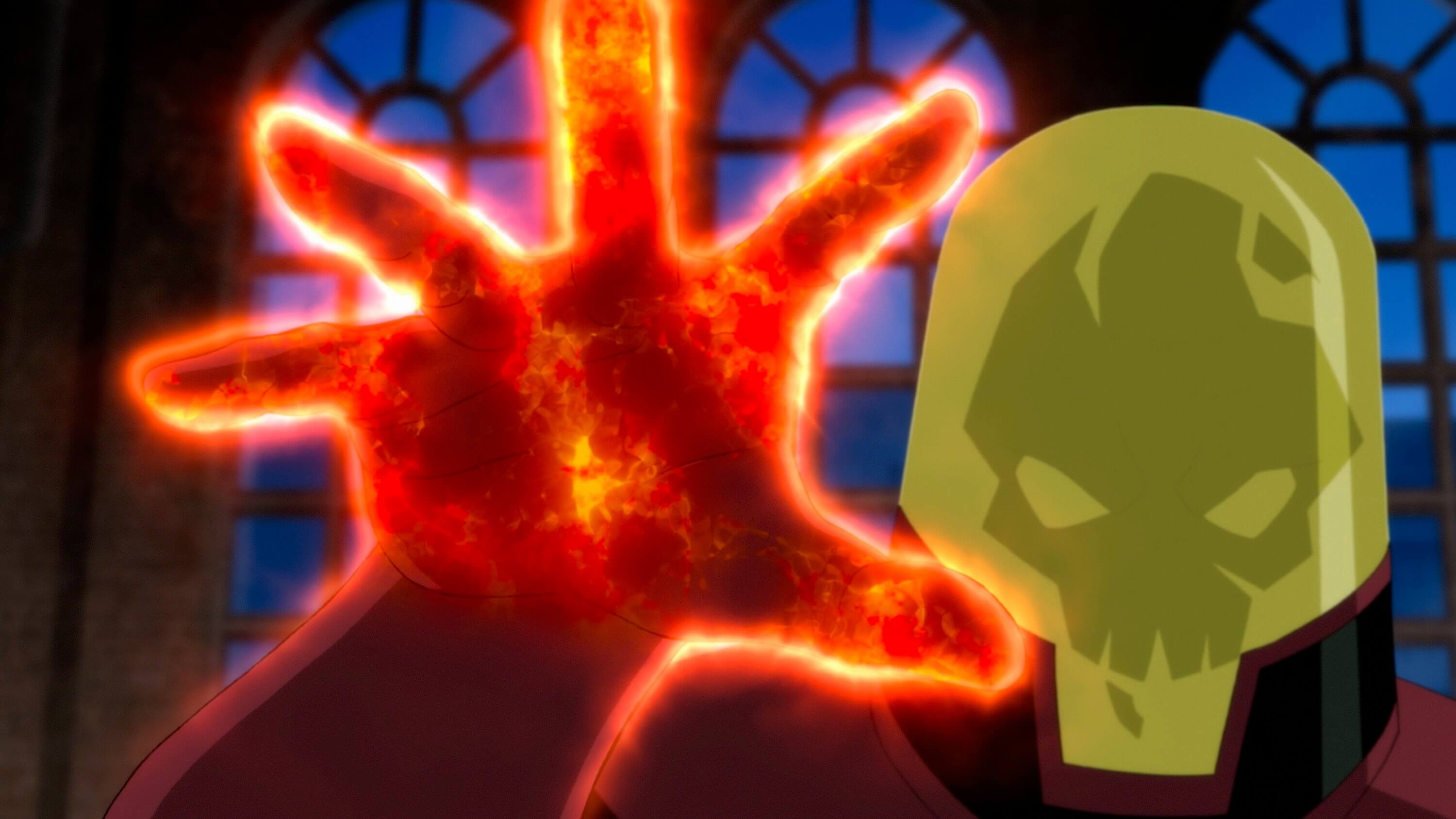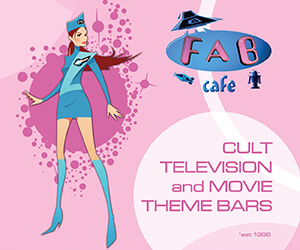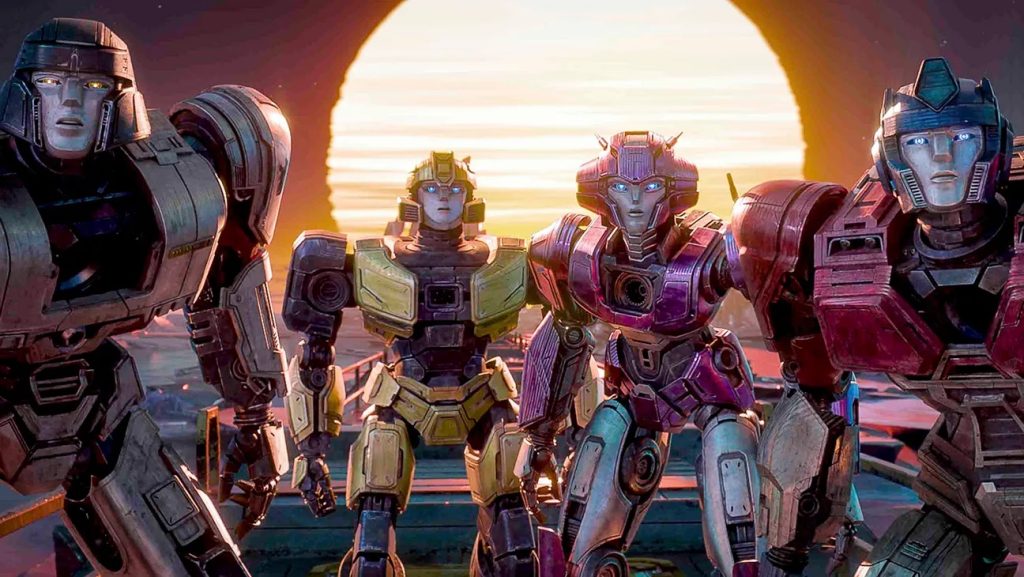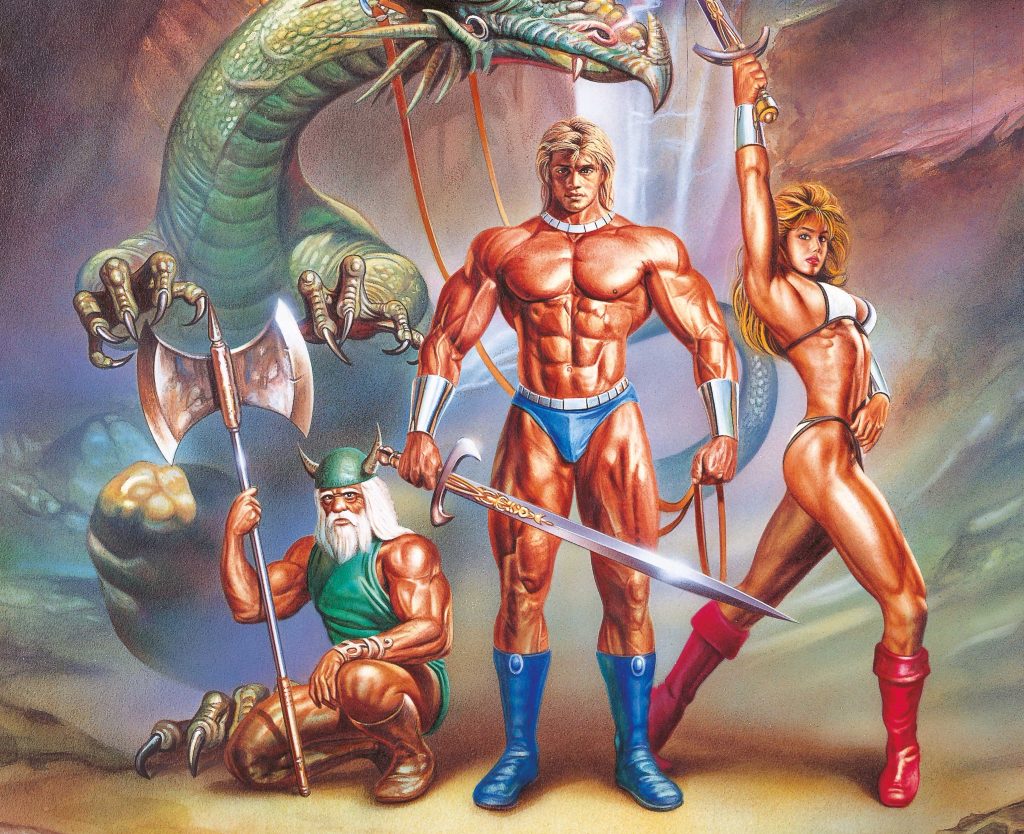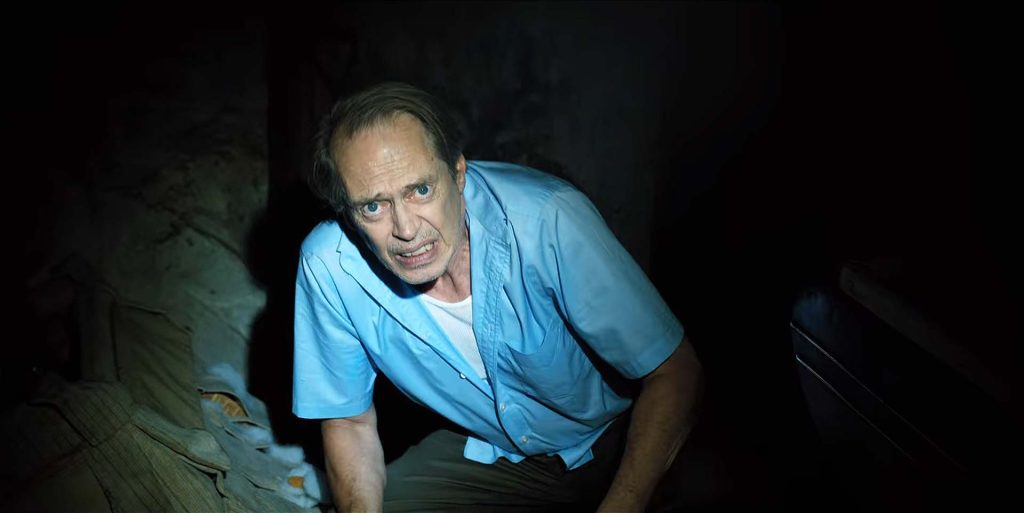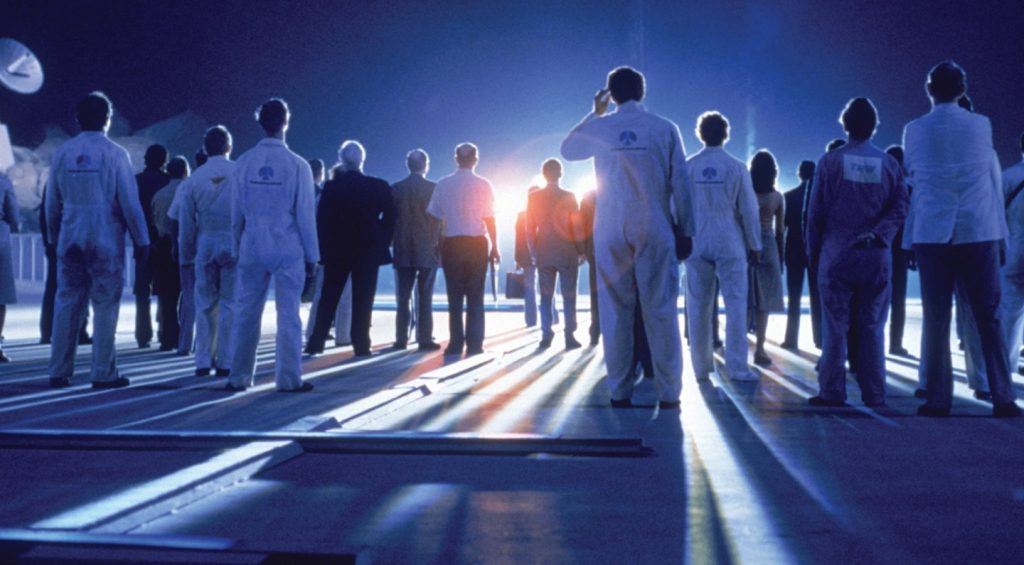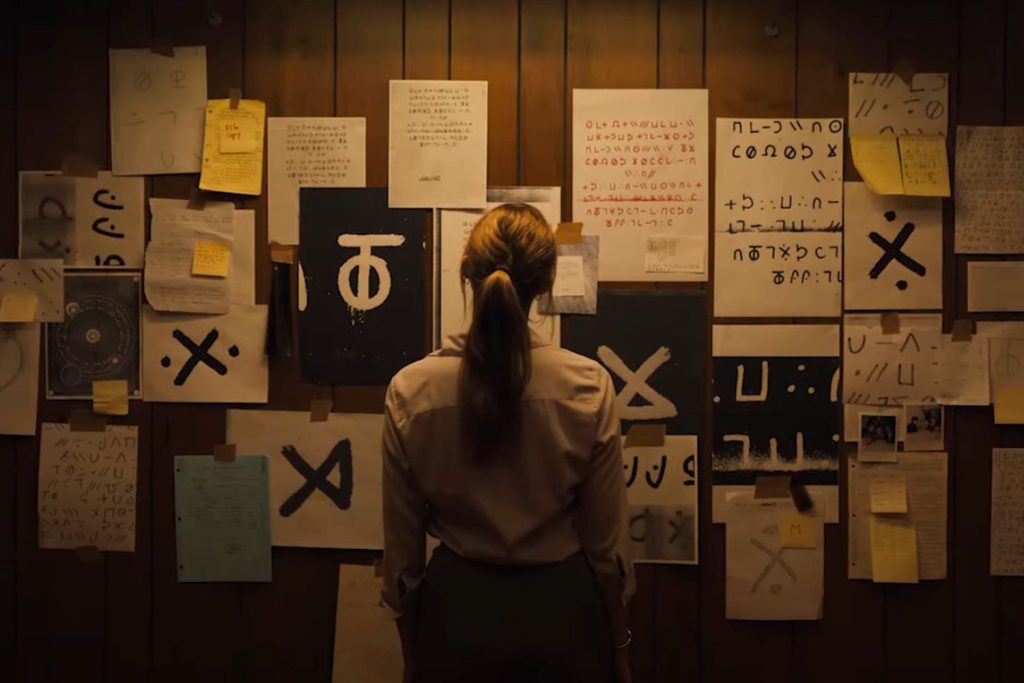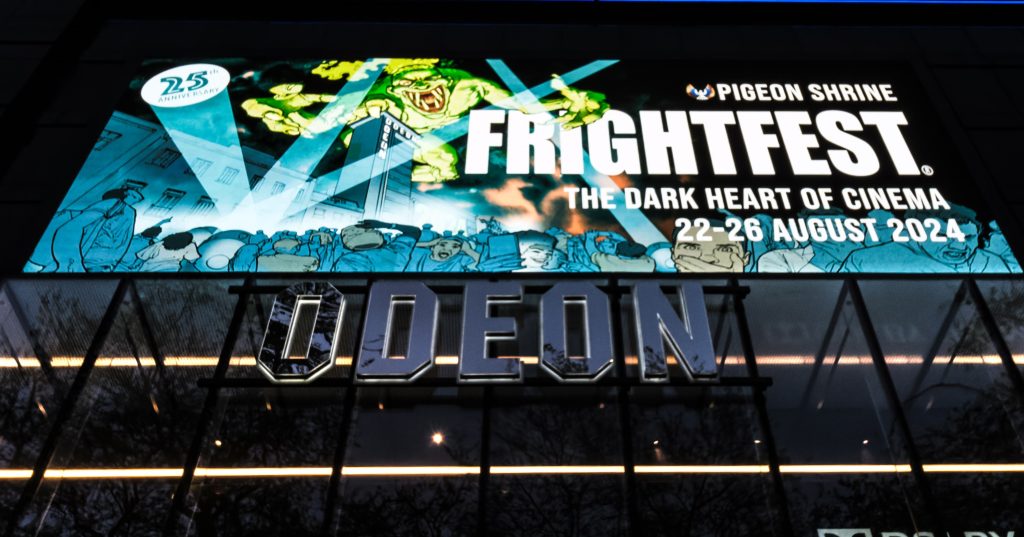With Warner Bros. and DC Entertainment having regularly wowed audiences for several decades now with their animated output, the next animated DC offering on the table is Justice League vs. the Fatal Five. Having directed fan favourites such as Batman: Year One, Teen Titans: The Judas Contract, Batman: Gotham by Gaslight and the two-part adaptation of The Death of Superman, Sam Liu is the person tasked with helming Justice League vs. the Fatal Five. We were lucky enough to grab some time with Sam to discuss the movie, returning to the Timmverse of characters, showcasing lesser-known heroes and villains, and a whole host more.
STARBURST: Of all the characters to call on, what prompted the decision to make the Fatal Five the villains of the piece in this latest movie?
Sam Liu: You know, I asked the same question when I got the script. Because it’s a Bruce [Timm] movie, he takes control over a lot of it and he just likes to use different characters. When we start a project, he goes through his rolodex and just sees what takes his fancy, what piques his interest. We do these so quickly, it’s not a case of “Have you done your favourites?” because I think he did his favourites ten years ago or more. So it became a case of how can we make this new and interesting.
Given that there’s someone like Bruce involved, then the writing team of Alan Burnett, Eric Carrasco and Jim Krieg, how does the creative process work for yourself as the director and is it almost like a studio system setup?
That’s a good question. I’ve since become a producer a couple of years ago, but I’m the junior producer; I still don’t necessarily get to pick. For the past maybe four years or so, it’s been primarily James Tucker and Bruce Timm. They’re the ones that spark the sort of, “Well, what do I want to do?” It comes from different places because it’s a mix of the big creative producer – whether it’s Bruce or James – and then DC or home video will have something that they want to push, something on their wish list. It’s either something Bruce or James wants to do, or it’s, “Oh, we want to do this character. Is there something you can create with this?” So where it comes from is a few main areas. That’s where it starts. They generally have a loose concept that they want, which they flesh out with the writer. At this time it’s Jim, but in the past it’s been Alan Burnett. They work with whoever is going to write it. Sometimes it’s Jim or Alan, but most times they have someone they target to write it. I usually come in during the draft. We read them, we have our notes and we sort of pound out the script. Before, when I was just a director, I would wait until the script was finished or close to finished – I would probably come in during the third draft – and I would have my notes. Now I have a little more input towards the direction of it.
In the past, we’ve had to do things like re-write the third act entirely. I’ve been doing that a little more with James, as James seems to embrace the collaborative a little more than Bruce – Bruce is a little more reluctant – but it’s been good. The last couple I’ve come in a little earlier, so I’ve been able to get some things in. Justice League vs. the Fatal Five, it was kind of earlier in my being a producer so I didn’t have as much say. As a director, you’re absolutely correct that it’s like a studio system. For the past four or five years, they have a project, they assign it to me. I think there’s a politeness where they ask me if I want to do it, and of course I want to do it, but after the script is finalised and the designs are picked the director works primarily on their own with a storyboard team. The producers will come back in after a first pass. In that sense, the director has a lot of creative control. That’s where the relationship between the director and the producer is: does the producer trust the director to carry out the vision they want? A lot of this is so fast, and as a director you’re only one person and as a producer you’re only one person, so it’s a lot of things to manage. The whole familiarity and trust is important. If everything I show Bruce or James is wrong, there’s no time to fix anything. That’s a lot of our job, actually. I almost parallel it as we’re trying to cook a Thanksgiving dinner and we have our shopping list. That’s what we send to overseas, but actually what comes back is what we have to work with. You go to the store and order all of the pieces that you want, then when you’re at home that’s all you’ve got. You can’t go back to the store. Sometimes you don’t have a good turkey, but you have to think about how you’re still going to make this meal.
In addition to the Fatal Five, the other big characters to be featured are Star Boy and the Jessica Cruz Green Lantern. Given the very real issues – such as PTSD and mental health concerns – that this duo has, how important was it to make sure that Star Boy and Green Lantern didn’t get overshadowed by the all-powerful bad guys or the more famous Justice League names?
I feel like I’ve done so much of these types of stories, and obviously Bruce has done way more than I have, that it was really refreshing. That was my favourite part of it, as to me it was very unique. The stories that I like or tend to focus on, it is that characterisation. With this one, it’s not something I have to dig out; it was on the page. Again, it wasn’t very difficult at all. Thankfully, we used the iconic designs and iconic voices attached to these designs that I felt like I didn’t have to catch people up; people already know who Superman is, who Batman is, who Wonder Woman is. People know already, so we didn’t have to set them up and it instead gave us time to set up the new people. My general theory on ensemble casts is you’ve got to pick. You have to give everyone their moments so they’re not entirely these cardboard people sitting in the background, but you have to pick stuff, pick who you’re going to be highlighting and who needs to fall into the background a little bit.
Where the Justice League is concerned in this film, was there ever any talk of featuring any other or alternative Leaguers or was it always to be the Holy Trinity, Miss Martian and Mister Terrific?
So much of this is based around what story we’re telling, what’s the plot. Then it gets torn down from there. It roughly breaks down to how many pages are in a script – which is usually limited to 90 or 100 pages – so there’s a certain point where you’re keeping those things in mind. That’s probably a better question for the writers, but there’s a certain point where you try to tell a manageable story. And most of the time we’re a little bit long, so we have to start cutting things out. Things like having all of these characters would be great and it works much, much better in a series as you can tell many more types of stories. Even with the characters we have, there’s a few of them who probably could’ve gone, that we didn’t 100% need. I think we were pretty good at picking who stayed, but adding more would have bloated it and made it longer without necessarily helping the plotting or the story we’re trying to tell.
Justice League vs. the Fatal Five uses the classic animation style of what many call the Timmverse or Diniverse. As someone who was making their first foray into this particular world, how was it to work in that realm and in that style?
People make a huge deal out of it, but if you ask Bruce then it’s always about telling stories. The Timmverse, the Diniverse, that’s Bruce’s take on stories. If you do enough of them then there’s certain consistencies. During ADR – the additional dialogue we record once we’ve done the body of it and we’re looking at the picture – hearing Susan [Eisenberg] in the booth and seeing the picture pair together, there’s just something about seeing his [Bruce Timm’s] Wonder Woman and his Superman. I’ve worked on Batman so much, but the Wonder Woman and the Superman, just seeing them…
When Wonder Woman shows up in the alleyway to meet Jessica, or even when Superman is doing his wind breath, I was just, “Wow!” There’s something about it that feels so classic. You do it, but then when it comes back and you see the combination of all the voices, the way those designs animate, it took me aback a little bit. I didn’t expect to have that kind of reaction, but seeing them and hearing them, there’s something magical about it.
Often it can be hard to make bad guys feel like a genuine threat, as we all know that the heroes will ultimately, usually save the day. With the Fatal Five, however, they instantly feel like a major threat. In these times, how hard it is to make the villains feel like a legitimate big deal?
Oh, it’s especially hard. The audience is a lot more critical these days than, say, 20 years ago. With the internet and video games, there’s an oversaturation. Back in the day, it was hard to find things. Fight choreography in Asia was so much better than in America in the ‘80s – I think that’s why Hong Kong cinema was so potent back then – but now it’s everywhere and people are used to it. It has to be good and it has to be done in a way that it’s earned, so it does make it difficult. I have to say, in this movie there are a lot of things that I wasn’t sure the audience were going to buy. Thankfully it hasn’t come up – I haven’t seen anything online, anyways – like how quickly the Justice League get taken down by the Emerald Empress. In order for that to happen, you have to make her extra powerful; there has to be these shows of power so that you’re, “Oh, well that could happen.” There’s a lot of cheating that happens.
Somewhere during the middle of this production, Bruce and I had gone through quite a few rounds of editing, we were trying things up and were just, “I don’t know if this is any good or not.” There are these huge things going on, then there’s these very personal things going on with two people, so you have no idea how people are going to react to this. There’s a lot in here, we’re using all of our instincts, both of us wear things close to our chest, and you have to almost be a hater when you’re watching it so that you can catch things that aren’t believable or that people won’t buy. But then you also have to be a dreamer as well, because you have to take people on an adventure. So a lot of the time, in the middle of the process, you’re wondering whether you’ve achieved this or not. With things like The Killing Joke, it caught me a little off-guard at the beginning. But as we were building it, I thought, “This is smooth” and that people would go along with that. Then we’d get the reaction that we do and it’s, “Oh, I guess people couldn’t go along with us on that ride.” You never know with these things, but in this case I remember telling Bruce, “I’m not sure if plot-wise it’s going to be a bumpy ride maybe. All I know is I really love these characters, I feel really attached to these characters, and I think it’s a really strong character story.”
In a world where everyone is quick to take to social media to let their thoughts be instantly known, how hard is to not get too carried away with either the praise or the criticism that comes your way for these projects?
It’s easier with the praise, obviously, because it’s like what athletes say or businesses say: it’s what have you done for me lately. The window of praise is always short, then people are always looking for the next thing that’s going to entertain them. So that’s easy and you know that you have a window where that’s potent and then the returns are going to be very low. But the hate seems to last longer, which I think is a by-product of the whole social media thing. I think people are more likely to get online to complain about something, whether it’s their job or entertainment, than to praise. It’s harsh at the beginning when people are hating something that you’ve done or calling for your head or your job. The first time you experience that, it’s a little shocking. I think that’s just the way the internet is and you just have to get used to it.
Even in things where people are these very popular reviewers, I think part of their schtick is to bash on things. I think that’s what the audience likes; they like turmoil and dramatics and things like that. But I guess it’s all entertainment, so whether it’s good or bad you have to pander to the audience a little bit.
You earlier mentioned how Bruce Timm is at a point where he’s looking at what characters he’s not used yet. Having done a lot of DC work yourself, is there still a character or comic book arc out there that you’re dying to get your hands on?
You know, I haven’t read comics in two decades. I’m an ‘80s, ‘90s sort of fan. I felt that that was the most potent for me, so I kind of feel like we’ve done most of the iconic ones from those eras. This is kind of my standard go-to one, and I really don’t know how it would be portrayed, but it’s always Neil Gaiman’s Sandman. The later part of my comics interest was Vertigo and all that stuff. I know that’s not really our audience as it’s more of a drama, and it would work better as a streaming series. I don’t think kids would be interested in it as it slow burns. I think it would be difficult to do and I don’t know how big the audience for that would be. But for me as a fan, those stories left a big impact on me. It’s a very niche fan base.
For years now, the animated DC output has been knocking it out of the park with so many brilliant movies and shows. So, what’s the secret to the constant success?
I’ve worked at quite a few major studios and I think it really comes down to the heads. They allow you to edit a certain way, they allow you to tell a certain kind of stories, they don’t want you to dumb it down. DC’s been very good and it’s great to have legendary people like Bruce and James, where they just leave us alone and let us do our stuff without too much outside influence.
Justice League vs. the Fatal Five is available on Blu-ray and DVD from April 29th, and you can find our review of the movie here.

